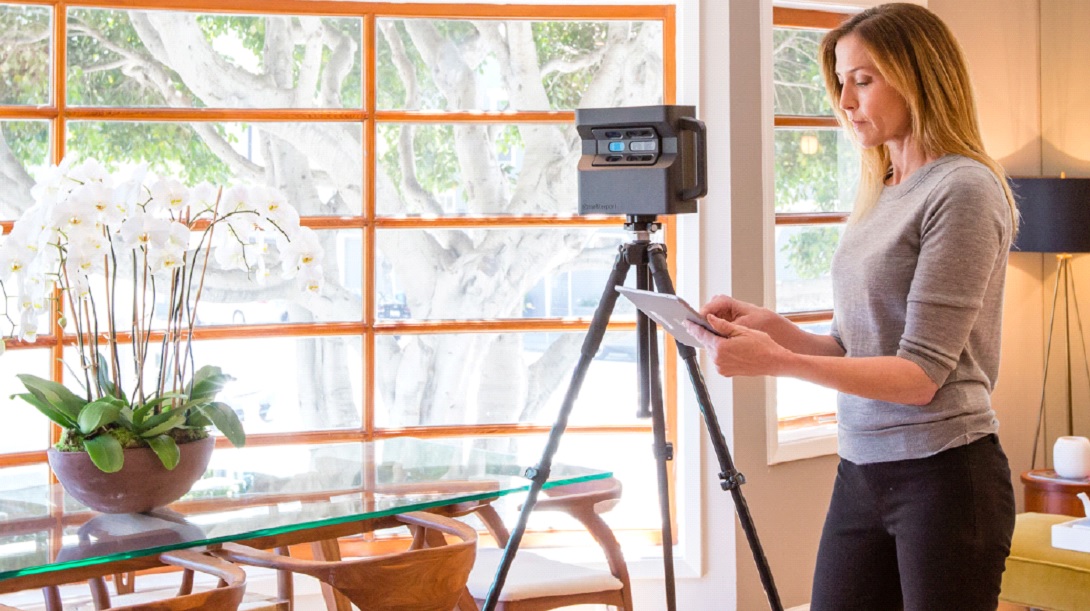
If you were searching for a home in the 1950s, you essentially had to do so "the old-fashioned way" - by driving around to available properties in your area and seeing as many of them as you possibly could. Not only was this a time-consuming process for most people, but it was also inherently ineffective. There are only so many hours in a day and you needed to be very judicious about how you spent them while on the hunt.
Then, in the early 1990s, something incredible happened: the World Wide Web was born. It's not a surprise that the prevalence of the Internet in the homes of average people (as opposed to college campuses and businesses) is directly related to the rise of real estate photography. Around that time, real estate agents realized that by including color photos on websites and listings for properties, they could generate more interest - and more leads - than ever before. Home buyers could benefit too, as now they could not only see properties in an adequate amount of detail without ever actually getting in the car, they could suddenly see homes for sale in other cities or even states.
This gave everyone involved more options than ever and thus, one of the most important real estate trends of the last quarter century was born.
Over the years, this technology has continued to advance and the visual side of the digital experience has become more crucial than ever. Now, it's not uncommon to see real estate agents buying drones so that they can capture high definition videos of a particular property from the air. All of this is in service of an essential goal for any agent: helping someone get a sense of what it might actually be like to live in a property through any means necessary.
But as is true in so many other industries, technology in real estate has never really sat still for long. Advancements like the Matterport camera have not only changed the way that agents and buyers alike think about what a listing can be... they've also essentially changed the touring process itself, both for the better and for all-time.

Image Source via matterport.com
Originally founded in 2011, Matterport is a company that offers premium camera solutions designed to capture, store and share three dimensional images and models. Based out of Sunnyvale, California, the company's founders say that they started their business to support any customer that relies on integrated 3D models to operate their own organizations - which is a large part of the reason why the platform has been so successful particularly in the real estate industry.
The actual Matterport devices themselves can be paired with any compatible camera, or a smartphone or other mobile devices like an iPhone. Though the specifics will obviously vary depending on the model you're talking about, in general the process goes like this:
First, you use your camera and Matterport to capture HDR panoramic imagery. What makes this solution different from a standard camera, however, is that sophisticated depth information of the environment is captured at the same time.
The Matterport platform synthesizes all of that spatial data and visual imagery, essentially combining it in a way that creates a dimensionally accurate 3D digital "twin" of the environment in question.
The platform provides further tools that real estate agents can use to generate photo galleries and even virtual "walk-throughs" of a space.
The Matterport SDK can be used to integrate this content into an agent's own website or branded applications, thus making it possible to share with anyone, at any time, and from any device.
In other words, it's a way to transform standard 2D images into 3D "twins" that are spatially accurate and engaging in a way that regular photos can never be.
At the very least, it's a way to allow the photos of a house or other environment to "come alive," offering an experience that is far more interactive than ever before. Matterport images naturally have a bigger sense of dimension to them by design, meaning that people can get a feel for how big a room is or how tall the ceilings are without ever physically stepping foot in that place.
Over the last decade, savvy real estate agents have started to use it to make those early stages of buying a home not only more efficient for their customers, but more fun and exciting as well.
But as is true for so many other examples of state-of-the-art technology, a lot of people viewed Matterport as little more than a "fun addition" to the buying process up to this point. Yes, it's helpful to get a better sense of the way a home "feels" from the comfort of your computer chair. But for most people, it was a way to quickly disqualify a few homes from their tour list so that they can spend more time in those that remain when they scheduled their in-person tours. It was an asset to real estate professionals, to be sure - but few looked at it as something that was really going to "seal the deal" when it came to actually making a sale.
Until, of course, the Coronavirus pandemic hit in early 2020.
Just because roughly 60% of Americans are currently under stay-at-home orders does NOT mean those people don't need to buy a new house. A lot of people were likely already in the process of searching when the COVID-19 situation first hit, and others knew that this summer would be the one when they finally moved into the home of their dreams. Being required to stay in your home for an indefinite period of time has certainly hampered those efforts, but luckily the wonders of modern technology have been able to step up and lend a helping hand the same way they always do.
According to one recent study, Zillow in particular said that it saw a massive 191% increase in the creation of 3D home tours in one week at the end of March, 2020, when compared with the average number that were created in February. Likewise, real estate brokerage Redfin indicated that it saw a 494% increase in requests for virtual walk-throughs and agent-led video home tours, up dramatically since the beginning of March.
Truly, this is something that couldn't have come along at a better time - though even those at Matterport would have had no way of knowing that just a year ago. For so many areas in the country, people have no idea how long current social distancing requirements will stay in place. Even once stay-at-home orders are lifted and things begin to get "back to normal," it'll be difficult to find people willing to walk through what is essentially a public space for a home tour with an in-person agent for the foreseeable future.
Thanks to devices like Matterport, however, they don't have to. Virtual tours like those offered from Matterport are a perfect opportunity to show prospective clients a finished, furnished interior in a way that still keeps them as active and as engaged in the buying process as ever, all in a way that seems like it was tailor made for the current environment that we're currently living in.
In the end, it was already clear that the Matterport camera (or at the very least, something like it) was going to be the future of the real estate industry as we knew it. It's just that thanks to Coronavirus, few people likely could have predicted that the "future" would have arrived quite as quickly as it did.
Even on a basic level, Matterport tours bring with them a host of unique advantages for real estate professionals that can't be ignored. First off, they save a tremendous amount of time because customers can see a property on their laptops, phones and other devices with an incredible sense of immersion. They can instantly get a feel for what it would be like to live there without physically seeing it, thus preventing the need for agents to field constant phone calls and allowing them to focus on other aspects of their business that demand their attention.
They're also an incredible opportunity for real estate agents to cut costs, as they no longer have to spend countless hours driving back and forth to meet potential clients only to have them quickly realize that the property in question just isn't for them.
But in an age when it will be difficult to get people to feel comfortable with actually walking into a home for quite some time, Matterport tours and other 3D options are a perfect way to keep the real estate industry moving forward as efficiently and as strongly as it can. It's also something that is going to continue to get even more popular as the technology at the heart of it continues to advance.
Love,
Kartik
The Ultimate Guide to Creating a Home Buying Checklist
Common Misconceptions About Cap Rates: Debunking the Myths

Founder, Adhi Schools
Kartik Subramaniam is the Founder and CEO of ADHI Real Estate Schools, a leader in real estate education throughout California. Holding a degree from Cal Poly University, Subramaniam brings a wealth of experience in real estate sales, property management, and investment transactions. He is the author of nine books on real estate and countless real estate articles. With a track record of successfully completing hundreds of real estate transactions, he has equipped countless professionals to thrive in the industry.